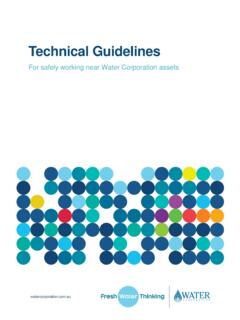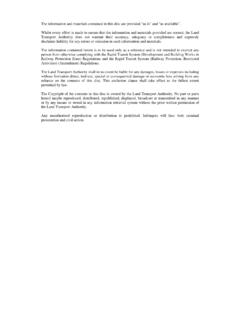Transcription of 13 Art - aepa.nesinc.com
1 13 Art This AEPA test was replaced by a NES test. Examinees may continue to find this study guide useful as they prepare for the NES, as the previous AEPA test may have covered objectives and content similar to the NES test. AZ-SG-FLD013-02. Readers should be advised that this study guide, including many of the excerpts used herein, is protected by federal copyright law. Copyright 2013 Pearson Education, Inc. or its affiliate(s). All rights reserved. Evaluation Systems, Pearson, Box 226, Amherst, MA 01004. AEPA, Arizona Educator Proficiency Assessments, and the AEPA logo are trademarks of the Arizona Department of Education and Pearson Education, Inc.
2 Or its affiliate(s). Pearson and its logo are trademarks in the and/or other countries of Pearson Education, Inc. or its affiliate(s). TABLE OF CONTENTS.. Field 13: Art PART 1: GENERAL INFORMATION ABOUT THE AEPA AND TEST PREPARATION. AN OVERVIEW OF THE 1-1. Test Development Process Characteristics of the AEPA. Test Administration How AEPA Test Scores Are Computed and Reported HOW TO PREPARE FOR THE TESTS .. 1-3. Study the Test Objectives Focus Your Studies Identify Resources Develop Study Techniques Answer the Practice Questions Review the Sample Answer Sheet and Written Response Booklet Test Directions Sample Answer Sheet Sample Written Response Booklet WHAT TO EXPECT THE DAY OF THE TEST.
3 1-12. The Morning of the Administration At the Test Site SAMPLE TEST OBJECTIVES AND QUESTIONS .. 1-13. Organization of the Test Objectives Question Formats and Strategies Selected-Response-Question Formats Performance Assignment Formats Evaluation of the Sample Written Performance Assignment Response PART 2: FIELD-SPECIFIC INFORMATION. INTRODUCTION .. 2-1. TEST OBJECTIVES .. 2-2. PRACTICE QUESTIONS .. 2-8. ANSWER KEY .. 2-19. STUDY GUIDE ORDER FORM. 0608. PART 1: GENERAL INFORMATION ABOUT. THE AEPA AND TEST PREPARATION.. Part 1 of this study guide is contained in a separate PDF file. Click the link below to view or print this section: General Information About the AEPA and Test Preparation PART 2: FIELD-SPECIFIC INFORMATION.
4 Field 13: Art INTRODUCTION. This section includes a list of the test objectives, practice questions, and an answer key for the selected- response questions. Test objectives. As noted earlier, the test objectives are broad, conceptual statements that reflect the knowledge, skills, and understanding an entry-level educator needs to practice effectively in Arizona schools. The list of test objectives for each test field is the only source of information about what a specific test will cover and therefore should be studied carefully. Practice questions. The practice selected-response questions and practice performance assignments included in this section are designed to give you an introduction to the nature of the questions included in the AEPA.
5 Tests. The practice questions represent the various types of questions you may expect to see on an actual test;. however, they are not designed to provide diagnostic information to help you identify specific areas of individual strengths and weaknesses or to predict your performance on the test as a whole. When you answer the practice questions, you may wish to use the sample answer sheet and sample Written Response Booklet provided in Part 1 to acquaint yourself with these materials. Use the answer key located after the practice questions to check your answers. Sample responses are provided immediately following each written performance assignment.
6 The sample responses in this guide are for illustrative purposes only. Your written response should be your original work, written in your own words, and not copied or paraphrased from some other work. To help you identify how the test objectives are measured, the objective statement to which the question corresponds is listed in the answer key. When you are finished with the practice questions, you may wish to go back and review the entire list of test objectives and descriptive statements for your test field. Arizona Educator Proficiency Assessments Study Guide 2-1. TEST OBJECTIVES. Field 13: Art SUBAREAS: Creating Art Art in Context Art as Inquiry CREATING ART.
7 0001 Understand the elements of art and principles of design and their use in works of art. For example: recognizing elements of art ( , line, texture, color, shape, form, value, space) and principles of design ( , repetition, balance, emphasis, contrast, unity, variety). analyzing how these are used in particular artworks to organize composition, achieve effects, including multisensory effects, and communicate ideas 0002 Understand tools, materials, techniques, methods, processes, and technologies employed in the fine arts. For example: uses of and advantages associated with tools, materials, techniques, methods, processes, and technologies employed in the fine arts ( , drawing, painting, printmaking, photography, sculpture, electronic media).
8 Effects, including multisensory effects, created by an artist's use of tools, materials, and techniques in the fine arts procedures for maintaining tools and materials and for using them safely 0003 Understand tools, materials, techniques, methods, processes, and technologies employed in communication and design arts. For example: uses of and advantages associated with tools, materials, techniques, methods, processes, and technologies employed in communication and design arts ( , electronic media, graphic design, clothing design, product design). effects, including multisensory effects, created by an artist's use of tools, materials, and techniques in communication and design arts procedures for maintaining tools and materials and for using them safely 0004 Understand tools, materials, techniques, methods, processes, and technologies employed in architecture and environmental arts.
9 For example: uses of and advantages associated with tools, materials, techniques, methods, processes, and technologies employed in architecture and environmental arts ( , urban design, interior design, landscape design, installation art, earthworks, site work). effects, including multisensory effects, created by an artist's use of tools, materials, and techniques in architecture and environmental arts procedures for maintaining tools and materials and for using them safely 2-2 Arizona Educator Proficiency Assessments Study Guide Art 0005 Understand tools, materials, techniques, methods, processes, and technologies employed in folk arts and crafts.
10 For example: uses of and advantages associated with tools, materials, techniques, methods, processes, and technologies employed in folk arts and crafts ( , weaving, quilting, pottery, jewelry making). effects, including multisensory effects, created by an artist's use of tools, materials, and techniques in folk arts and crafts procedures for maintaining tools and materials and for using them safely 0006 Understand the value of regular practice of and reflection on creation of artworks in a variety of media. For example: knowledge of the steps involved in various approaches to visual arts problems ( , defining the problem, developing ideas, elaborating on and refining ideas, articulating the idea with art media, reflecting on and revising the work).






